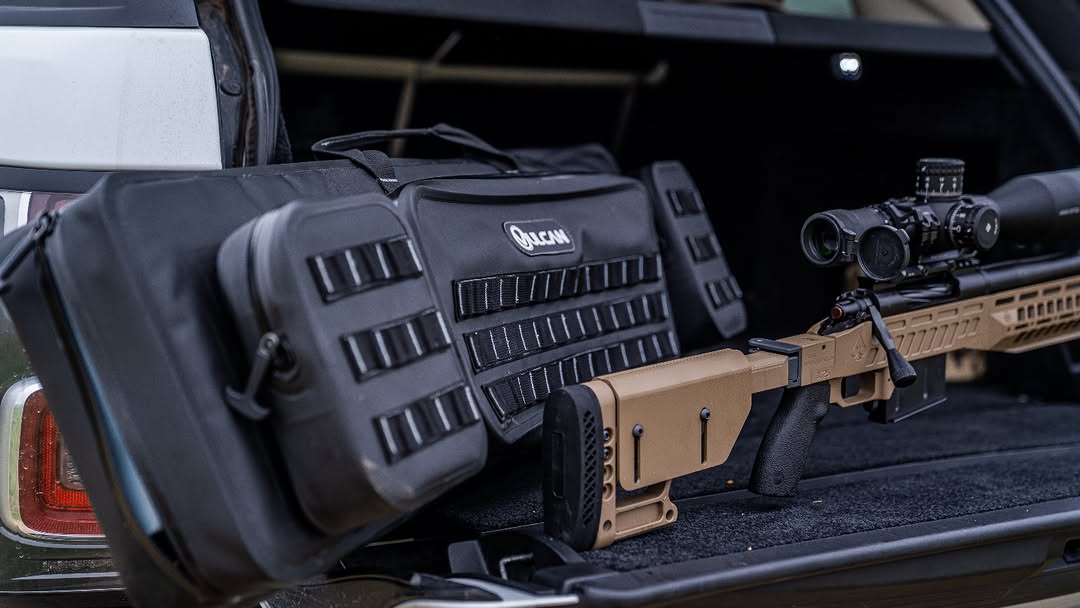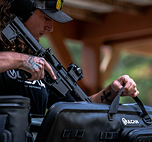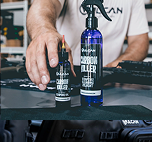A vehicle mounted pistol holster makes it easy to keep your firearm within arm’s reach while on the road. But securing the holster is only part of the equation. If the retention isn't set up right, your gun may shift during travel or be difficult to access when you need it most. Tighten it too much and you'll struggle to draw your weapon smoothly. Too loose and it may not stay in place. Either way, it's a risk you don't want to take.
Getting the retention just right comes down to understanding the holster’s design and how to adjust it for your setup. Whether you're driving across town or heading out for a longer trip, knowing how to set your holster’s retention properly could make all the difference. Let’s take a closer look at what goes into choosing and adjusting the right holster for your car.
Understanding Vehicle Mounted Pistol Holsters
Vehicle mounted pistol holsters come in different designs, each offering unique features based on how and where they’re installed. Some mount under the dash, some along the center console, and others slide neatly between seats. But regardless of placement, the goal is the same: a safe, secure holster that lets you access your handgun without delays.
Here’s how to break them down:
- Console holsters: These attach to or near the center console, often at hip level. They make use of the space most drivers naturally rest their hand near, making it easier to draw without much movement.
- Under-dash holsters: These hang under the dashboard or lower trim of the vehicle. While more discreet, they can be harder to reach quickly depending on your body position.
- Seat-mounted holsters: These are strapped to the side or front of a car seat. They can provide a clean draw angle, especially for passenger-side setups.
When picking out a holster for your vehicle, think about:
- How often you're driving and for how long
- What kind of access you want (dominant hand position, angle, etc.)
- How the holster attaches—permanent screws or adjustable straps
- Your vehicle's layout and available space
If you're left-handed, make sure the holster orientation matches. If you're tall, a holster low on the dash might lock you into an awkward reach. For example, one driver realized their under-steering-wheel holster made it hard to draw without leaning sideways every time. A move to a seat-mount solved the issue almost instantly.
Factors Affecting Holster Retention
Retention is all about how snugly the holster holds the firearm in place. The right amount of grip prevents bouncing or unintentional movement during sudden stops or rough roads. But too much resistance, and you'll have a hard time drawing quickly.
Two main factors affect how well your holster retains your pistol:
Material and Design Considerations
- Some holsters use adjustable screws or pressure locks to set retention levels
- Holsters made from rigid polymers or stiff leather usually offer finer control
- Magnetic designs rely on the pull strength of the magnet, which varies by model
- Holster shape also matters; a molded holster will hug your firearm more precisely than a universal-fit one
Environmental Influences: Weather, Temperature, and Movement
- High heat can soften some materials over time and affect retention
- Cold temperatures may stiffen a holster and make the draw more difficult
- Bumpy roads or uneven terrain can gradually loosen your setup if not checked regularly
Another thing to think about is how often you remove and re-holster your firearm. Frequent handling can change how your holster grips the weapon, especially if it's older or made of softer material.
Whether you're dealing with weather changes or daily wear and tear, staying on top of these factors helps your holster do its job every time. Keeping that retention sweet spot depends a lot on how well your gear fits your habits and conditions.
Step-by-Step Guide to Adjusting Holster Retention
Getting your vehicle holster to hold your firearm just right involves a series of adjustments that can improve how dependable it feels. To start, here are some basic setup tips.
Initial Setup and Installation Tips
1. Place the holster in its exact location within your vehicle. Mount it securely using the provided screws or straps.
2. Sit in the driver’s seat and reach for the firearm. Your hand should naturally land on the grip without any awkward twisting.
3. Avoid placing it somewhere blocked by the steering wheel, leg space, cup holders, or other car features.
Testing and Fine-Tuning the Retention
1. Once mounted, check how snugly your holster holds your pistol. For retention screws, turn them a quarter rotation at a time, testing the feel between each adjustment.
2. If you’re using a magnetic or strap-based holster, see if the design slows down or blocks your draw.
3. Sit and simulate driving. Reach for your weapon to test both comfort and accessibility during daily movements.
Common Adjustments and How to Make Them
1. If the firearm feels loose, tighten the screws or adjust the retention settings until it’s firm while still allowing a smooth draw.
2. If your holster shifts when driving, check the mounting hardware. Re-tighten screws or add extra support with anti-slip material if needed.
3. If the angle feels off, reposition the holster so it doesn't interfere with seatbelts or other gear but still allows quick access when needed.
Spend time testing until the fit feels right for your driving style and body position. Sometimes small tweaks make a big difference.
Ensuring Safety and Accessibility
Safety doesn’t mean sacrificing speed, and quick access doesn’t mean letting your gear wobble around under sudden braking. The best position strikes a clean balance.
Mount your holster where it’s protected but still reachable. If you're traveling often, do regular monthly checks to confirm nothing has shifted. Vibrations, bumpy roads, and even the weather can cause small changes over time.
Check that screws, magnets, or straps are holding firm. An inspection before a long drive takes just a minute and can help avoid issues when it matters most.
Another piece of the puzzle is cleanup. Dust, dirt, and loose debris will build up in and around your holster. That buildup can affect retention and access. A brief monthly wipe-down using proper cleaning supplies will help it stay ready and distraction-free.
Stay Sharp, Stay Ready
Adjusting and maintaining vehicle holster retention isn't something you should treat as a one-and-done task. Firearms are personal. So is the way you drive, what you wear, and how you move. Your holster setup should reflect all of that.
Think of it like setting up your seatbelt or adjusting your side mirrors. You check them because being off by just an inch can make things harder or slow you down. Holster retention works the same way.
Make time to get it right and commit to reviewing it every so often. That consistent attention makes sure your firearm stays secure while letting you get to it fast when needed. Preparedness in small details pays off along the road. And that extra peace of mind is worth it.
Make sure your firearm stays secure and within easy reach while you're on the move by outfitting your ride with a quality vehicle mounted pistol holster from VULCAN Arms. Whether you're commuting daily or heading out on a weekend drive, our durable holsters are built to handle the road and keep your setup safe and steady.









Share:
Removing Old Oil Before Cleaning
Reinforcing Vehicle Holster Mounts